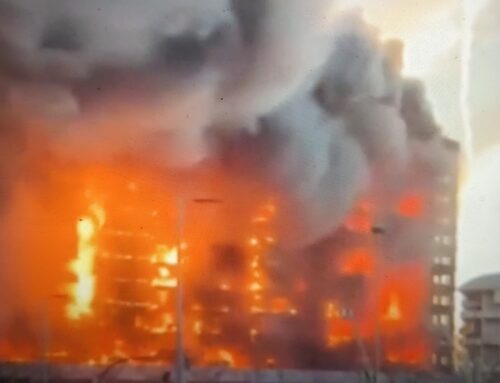On May 18, 1999, the inaugural meeting of the International Fire Sprinkler Association was held in Baltimore, Maryland, USA. Representatives of ten companies along with staff from the National Fire Sprinkler Association agreed on the establishment of a new organization that would work to increase global awareness of the effectiveness of automatic sprinkler and other water-based fire suppression systems.
From the start, the IFSA founders envisioned a supporting role for IFSA: it would be an organization that would put most of its resources into a grant program, distributing millions of US dollars around the world. What has it accomplished in its 20 years of existence? Here are two primary examples:
1. IFSA has helped to grow the global market.
The IFSA has utilized a unique strategy to help grow the worldwide market for fire sprinkler and other water-based fire protection systems and their components. It recognized from the start that local groups are in the best position to drive the demand for improvements in codes to protect the public, which in turn drives the demand for fire protection systems. So IFSA has helped organize and establish national and regional organizations with the same objectives as the IFSA, organizations that include the European Fire Sprinkler Network (EFSN), the Brazilian Association of Sprinklers (ABSpk), and the National Association of Automatic Fire Sprinkler Systems Colombia (ANRACI). The IFSA has also provided funding in support of the programs and projects of already-existing organizations that share IFSA priorities, including the British Automatic Fire Sprinkler Association, the Mexican Association of Automatic Fire Sprinklers (AMRACI), the National Fire Sprinkler Association (USA), the National Fire Sprinkler Network (UK), and Sprinklerfrämjandet (Sweden).
All of these groups have received support for programs that encourage broader use of fire sprinkler and water mist systems. These include research programs demonstrating the effectiveness of water-based fire protection systems, side-by-side burn demonstrations showing how systems operate in fires, and training programs aimed at Authorities Having Jurisdiction and others in the building community.
Although it is obvious that economic cycles and other factors are involved in the market for systems in any one place at a given time, success can be recognized when a larger percentage of new buildings are being equipped with built-in fire suppression systems. In Europe, for example, which received the bulk of the attention during IFSA’s first decade of existence, the efforts of the EFSN and national associations supported through the EFSN have led to an ever-increasing use of fire sprinklers. Despite the fact that building construction decreased by 11% between 2008 and 2018, fire sprinkler installation has increased by 15%.
Consider another region, Latin America, the primary focus of IFSA’s second decade. IFSA began its efforts in the region in 2009 by meeting with members of the local sprinkler industry and fire officials. Subsequent efforts included formation of sprinkler associations in Brazil and Colombia, training programs, support of the new association in Mexico, and hosting “Fire Sprinkler Americas” conferences in Panama in 2014 and in Medellín in 2016. Although construction data is difficult to obtain, the increased use of fire sprinklers is undeniable. While World Bank statistics put the growth of total Latin American gross domestic product between 2009 and 2017 at 34 percent, the increase in annual fire sprinkler shipments to the region by IFSA manufacturers was more than triple that, an increase of 114%.
2. IFSA has helped to increase awareness of the need for product certification.
The IFSA has recognized that market growth is not enough. Without attention to product quality, the demand for water-based fire protection will be filled by suppliers of substandard equipment available at lower cost in the international marketplace. As such, the IFSA has made it a priority to stress the need for product certification from reputable testing and certification bodies such as UL, FM, LPCB, and VdS. Recently the IFSA produced a video stressing the need for certification by revealing the inadequacies of non-certified sprinklers removed from service in Brazil, which has been hard-hit by such products in the marketplace. The video has been made available in English, Spanish and Portuguese, and the IFSA is currently arranging for translations into Chinese, Arabic and Turkish.
Efforts are proving successful. At the end of 2018, it was announced that ABSpk had won a considerable victory, with legislation passed in the State of São Paulo to require product certification. Due to the fact that most of Brazil follows the leadership of São Paulo State, ABSpk expects that this regulation will bring about profound changes throughout all of Brazil.
As the IFSA enters its third decade, it continues to seek new partners for its mission – “To globally promote the use of effective water-based fire protection systems.”

